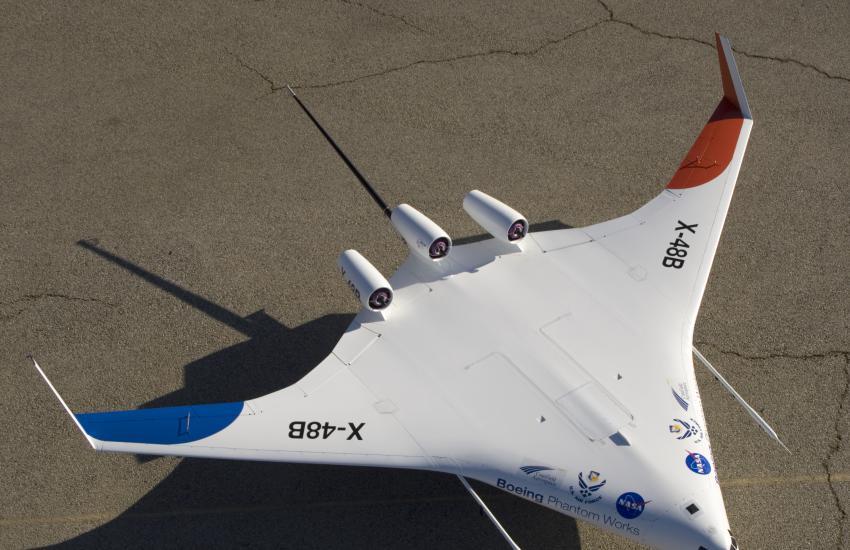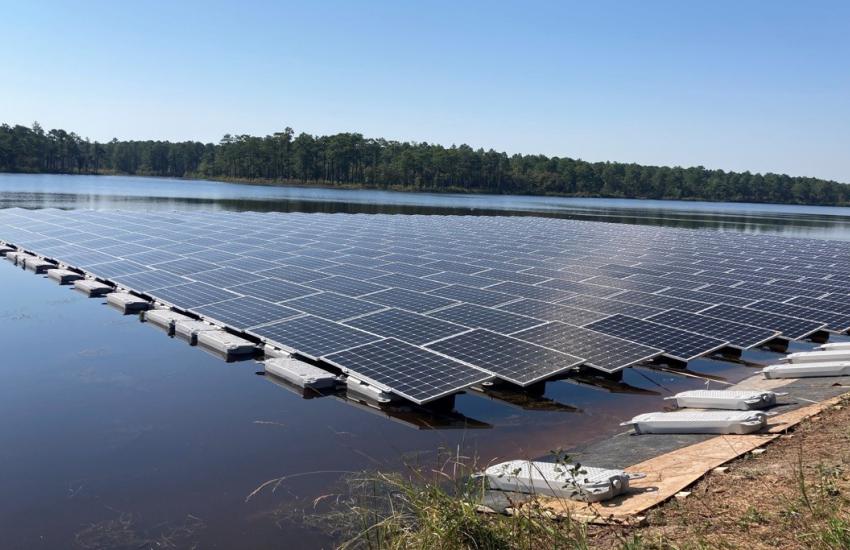Efficiency Fuels Air Force Climate Change Plan
The U.S. Air Force is focusing on lightening its fuel consumption and building better aircraft to reduce its carbon footprint on land and in the air. Ongoing efforts that dovetail with the service’s Climate Action Plan, released last October, already have borne fruit and are being expanded across the service. Ultimately, the Air Force aims to meet an overall goal of zero emissions at its installations by fiscal year 2046.
These efforts include developing alternative energy sources to power bases, some of which would come from collaborative projects with industry and overseas allies. Concurrently, the Air Force is incorporating changes that will improve its capabilities in operations against adversaries.
“We’re not doing the climate plan for climate’s sake, and we’re not doing energy for energy’s sake. Everything is about increasing our combat capability,” declared Edwin Oshiba, assistant secretary of the Air Force for energy, installations and the environment. “What we are focused on here are challenges that result from the effects of climate change.”
Oshiba explained that now that the Air Force has set its objectives in the Climate Action Plan, it is developing an implementation plot known as the Climate Campaign Plan. This future plan would outline specific actions necessary for attaining the key results defined in the action plan. The new plan also would provide for monitoring progress in those actions.
But reducing fuel consumption remains the biggest thrust in the Air Force’s climate change efforts. Oshiba noted that 45 percent of the Defense Department’s total energy consumption comes from the Air Force, and the service must address that. “It’s a target-rich environment,” he pointed out.
One ongoing effort has been the Mission Execution Excellence Program, or MEEP. Last year, a pilot program at two Air Force bases focused on optimizing flight plans for high-consumption aircraft through better scheduling and more efficient fueling. Over the five months of the program, the two bases saved more than 1.75 million pounds of fuel. That program will be extended to other bases, particularly those with mobility aircraft such as tankers and airlifters, and its evolution will allow the Air Force to conduct missions more efficiently.
“Can you carry more cargo? Can you fly farther? Can you loiter over a certain target longer just by improving how you fly?” Oshiba asked. “Early results show just how you can do that.”
MEEP used data analytics to improve scheduling. Two related applications that are nearing production are Puckboard and Jigsaw. Both would combine data harvesting and analytics to improve efficiencies that would result in fuel savings.
Puckboard, which will focus on scheduling aircrews, could offer savings of around 2.75 million gallons annually, Oshiba added. Jigsaw will be a planning tool for tankers, and past tests provided considerable fuel savings from its operational algorithms.
Oshiba stressed that no single technology holds the key to Air Force climate change efforts. But, at the heart of this effort is leveraging the data the service already has from its diverse sensors. Applying cognitive analytic tools to this data will allow the Air Force to target its efforts most effectively. “That’s kind of a journey we’re still on right now,” he said. “We have more than enough data that we need. It’s a matter of leveraging in a way and applying the right kind of tools to it so it can provide you with the information necessary to make the best decision possible.”
Other efforts at fuel savings focus on aircraft structures. Engineers are working to reduce drag on existing aircraft, which would lessen in-flight fuel consumption. For example, installing vertical wiper blades on KC-135 aircraft increases fuel efficiency. Another effort involves improving engine wash technology to enable a jet engine to operate more efficiently. This has been tested on CV-22 and C-130J aircraft, and plans are to expand that to other engines. Even engine blade coating improvements could increase the aerodynamic properties of these blades, which is being explored on C-17 and KC-135 aircraft engines.
“Small changes could lead to some fairly big results,” Oshiba said.
Engineers are looking at totally new designs for future aircraft that dramatically reduce drag. One popular approach is blended-wing body, which is a revolutionary design similar to the flying wing used in the B-2 and B-21. It would replace the conventional fuselage/attached wing design with an airframe that would barely differentiate between the wings and the body of the aircraft. Oshiba offered that engineers suggest a blended-wing design could gain as much as a 30% increase in efficiency without changing an aircraft’s engines.
The Air Force is seeking proposals for basic designs, after which it would move toward prototype solutions for proof of concept, he said. This could lead to replacements for the KC-135 or C-17 aircraft. Preliminary designs should come back within a couple of months, he said.
Several options currently exist for alternative aviation fuel. However, they are not yet at the price point to be competitive with existing conventional fuel. These alternatives would have to be provided in quantities that enable them to be operationally effective worldwide, he noted.
On the ground, the Air Force is exploring several ways of reducing fuel consumption. One effort to supply bases with power involves nuclear micro-reactors, and a pilot program at Eielson Air Force Base in Alaska is currently in the initial stages. Oshiba allowed that obtaining necessary approval from various bodies, including the Nuclear Regulatory Commission, can take a long time, so this plant probably will not begin operations until later this decade.
The Air Force is working extensively with industry on carbon-free electricity. At the heart of these efforts is having energy available where it is needed. The service is working with utility providers in Colorado, Texas and the Carolinas on programs the utilities are pursuing to transform their power supplies to reduce their carbon footprints. “Our goal is to understand what the commercial market can provide and in what quantity,” he stated.
Knowing where the electricity market is heading is a vital element in these industry partnerships, Oshiba continued. Rate-setting is a key point, and the Air Force expects to have some relevant data by the end of 2023. Knowing those costs will help identify appropriate alternatives.
Future base development also will encompass climate change measures. The Air Force is working with the other services and the Defense Department on construction materials, technologies and overall facility design. This could include retrofitting existing facilities as well as new constructs to achieve net-zero bases, he said.
These bases largely would be equipped with electric vehicles, he continued. The Air Force’s goal is to transition 100% of its non-tactical vehicle fleet to zero-emission vehicles by 2035. Oshiba emphasized that this transition would be achieved through the attrition of fossil-fuel vehicles to electric versions rather than by large-scale replacement of active internal combustion vehicles. This move also will require establishing the necessary charging infrastructure, which might necessitate working with local utilities, he noted.


Another aspect of Air Force climate change efforts involves exploiting the service’s excess land holdings. Oshiba noted that bases can work with local communities on carbon mitigation efforts, and he cited one case of a recent enhanced use lease that partnered with a private developer near Edwards Air Force Base in California. The developer, Terra-Gen LLC, built a 1-gigawatt solar array with a large battery backup that can supply energy back into the electrical grid while providing the Air Force with power for its own microgrid along with a cash payment in kind. Similar efforts are underway at MacDill Air Force Base in Florida and Joint Base McGuire-Dix-Lakehurst in New Jersey, he added.
This dovetails with the service’s efforts to develop alternative energy in partnerships, he continued. The Air Force is part of an endeavor known as Global Air Forces Climate Change Collaboration, which comprises 35 international partners that meet quarterly to share innovative ideas and best practices. Not only do these shared concepts help advance the cause of combatting climate change, they also allow allies to understand how each other would operate in the event of a joint military action, Oshiba pointed out.
“The biggest takeaway when it comes to alternative fuel sources—whether for installations or for aviation—is understanding that we are not going to do this alone,” he emphasized.
Geography matters when turning to alternative energy sources. What works in the North may not work in the South, and vice versa, he noted. Similarly, some approaches, such as geothermal energy, are region-specific.
Climate change and extreme weather events already are having an impact on the Air Force’s ability to accomplish its mission, Oshiba declared. When its climate change goals are achieved, the Air Force will be much more resilient. “It will be an Air Force that is not held hostage by a single energy source,” he stated. The Russian war in Ukraine has demonstrated that energy can be used as a weapon, as shown by changes in the flow of natural gas into Europe from Russia.
“I see a much more resilient Air Force that can respond to a wide range of different threats, be they manmade or natural caused by climate change,” he continued. “At the end of the day, [it will be] an Air Force that can effectively compete, deter and, if necessary, win against any adversary that feels like it wants to challenge our way of life.”
Link to Air Force Climate Action Plan: https://www.safie.hq.af.mil/Programs/Climate/



Comments